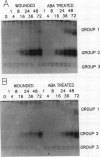Abstract
Phytophthora megasperma Drechs. f. sp. glycinea Kuan & Erwin (PMG) cell wall glucan has been extensively characterized as an elicitor of the pterocarpan phytoalexins, the glyceollins in soybean (Glycine max L.). Just recently, this glucan was shown to be a potent elicitor of conjugates of the isoflavones, daidzein and genistein as well. Here we report that PMG wall glucan also induces a rapid and massive accumulation of phenolic polymers in soybean cotyledon cells proximal to the point of elicitor application. Deposition of phenolic polymers is over then times that in wounded controls within just 4 hours of elicitor treatment and reaches a maximum by 24 hours. In the same tissues, isoflavone conjugates begin to accumulate at 8 hours and glyceollin at 12 hours. By 24 hours, the total deposition of wall bound phenolics in elicitor-treated tissues is several times greater than the peak glyceollin and isoflavone responses combined. Histochemical stains and quantitation of phenolic residues released after saponification and nitrobenzene or copper oxide oxidation suggest that the covalently linked phenolics include both lignin- and suberin-like polymers as well as simple esterified coumaric and ferulic acid monomers. Accumulations of phenolic polymers are accompanied by equally rapid and massive increases in activity of a specific group of anionic peroxidases. Although increases in peroxidase activity are not strictly limited to cells immediately adjacent to the area of elicitor treatment, the deposition of phenolic polymers is significantly less extensive in distal cells.
Full text
PDF



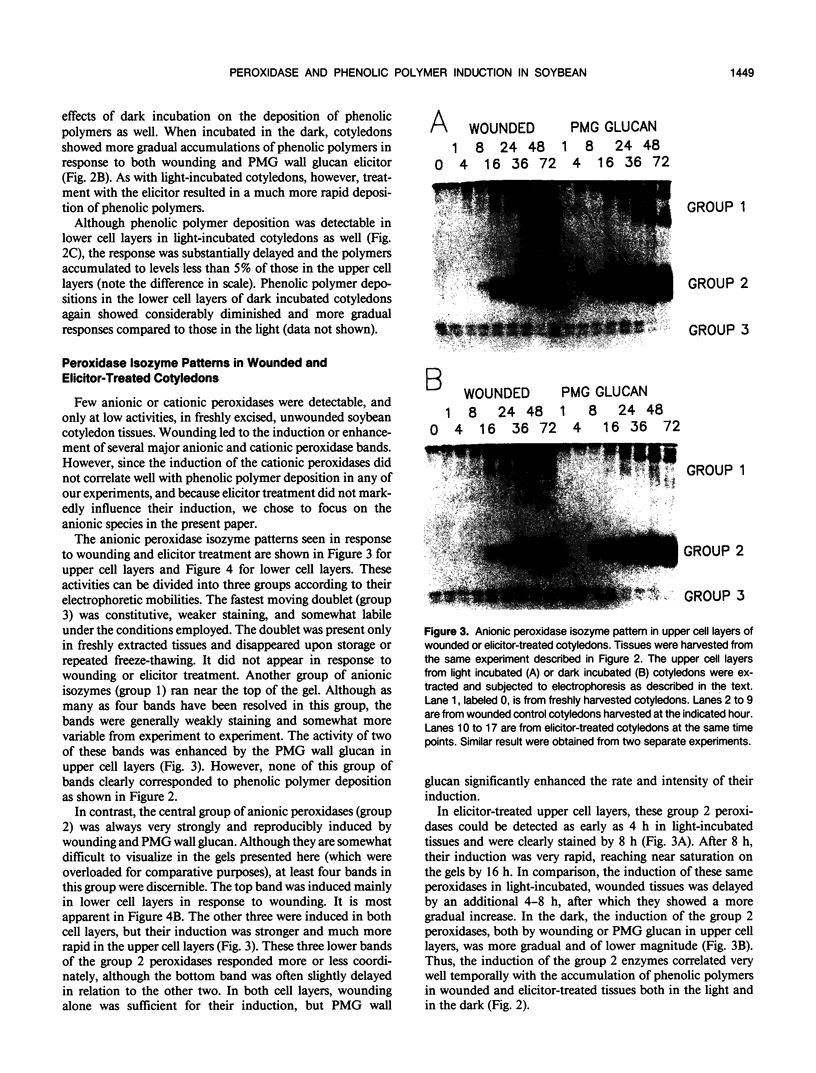


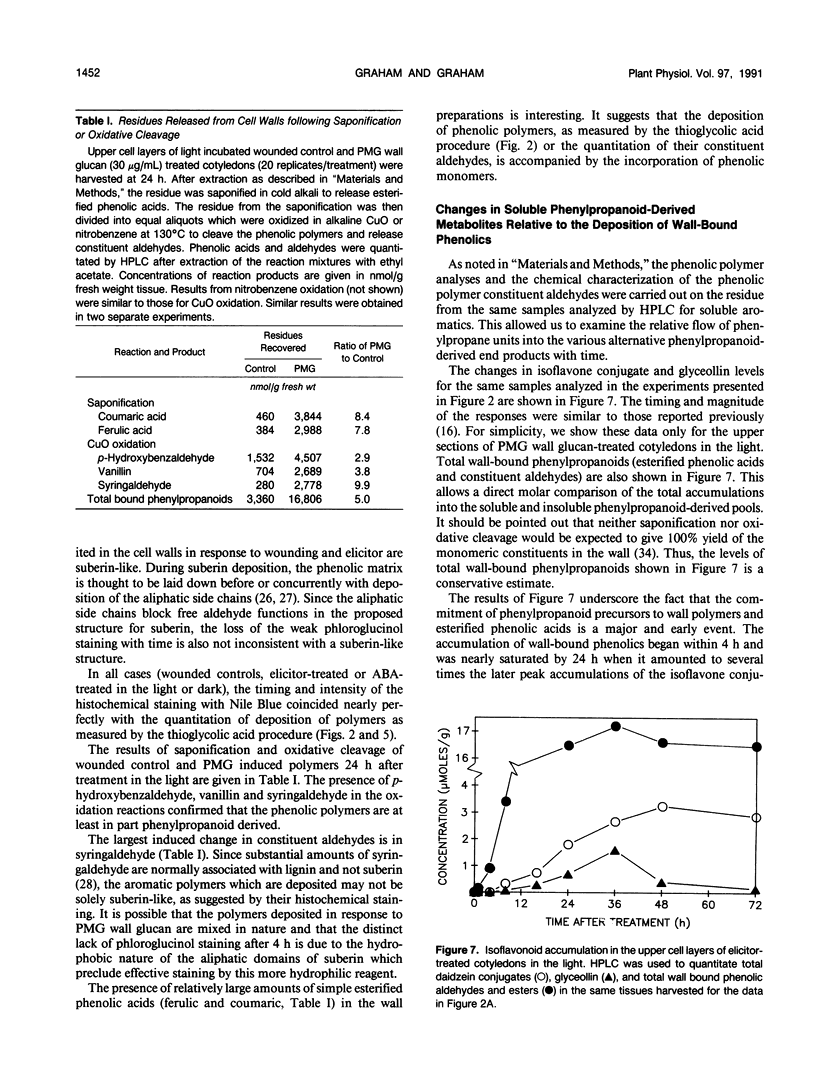
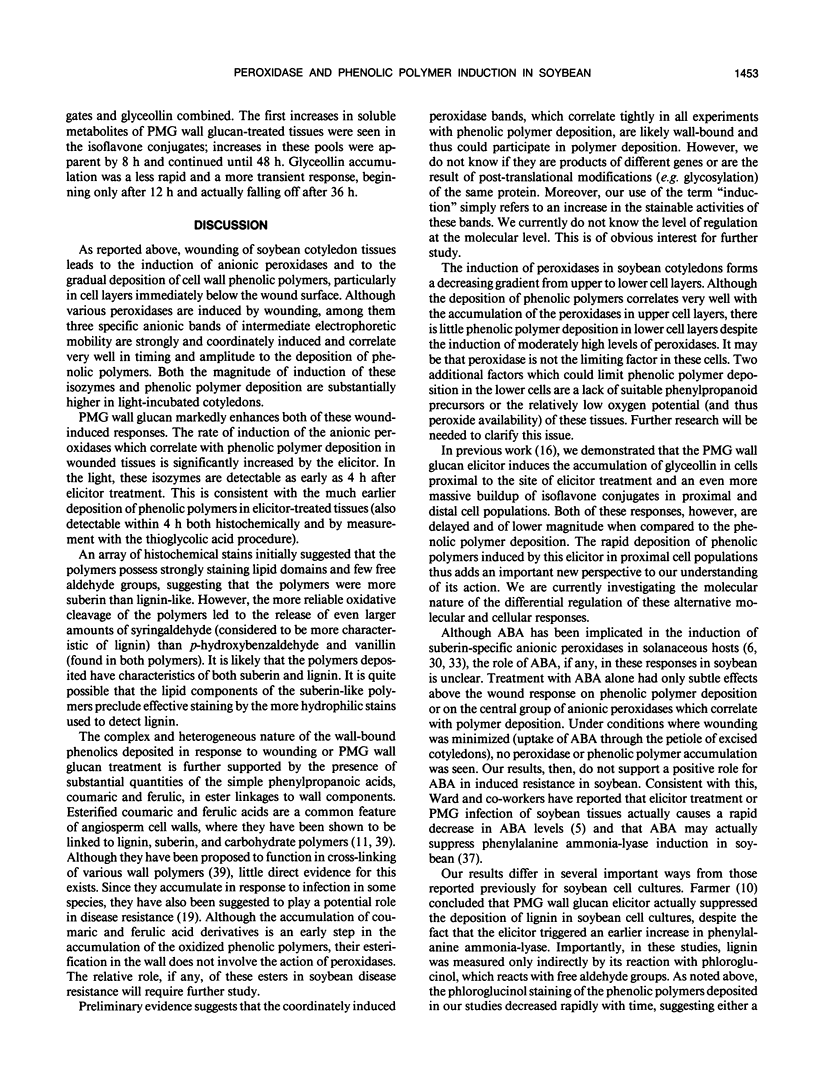

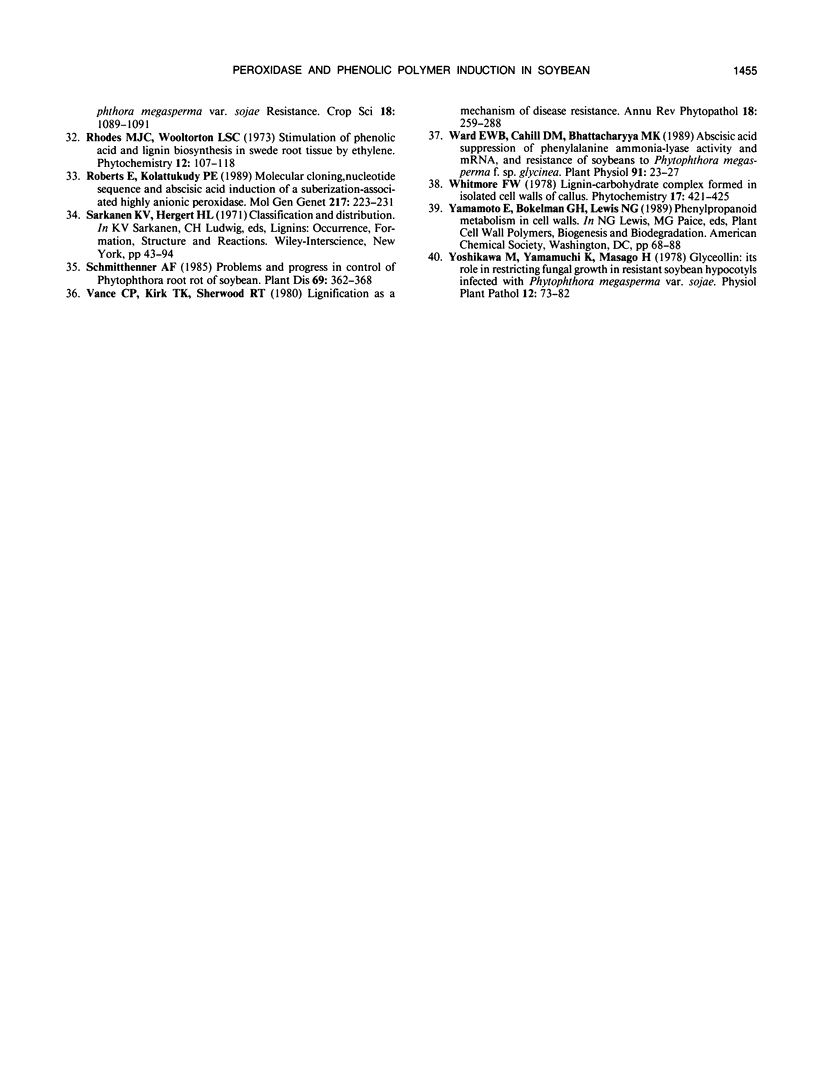
Images in this article
Selected References
These references are in PubMed. This may not be the complete list of references from this article.
- Ayers A. R., Ebel J., Valent B., Albersheim P. Host-Pathogen Interactions: X. Fractionation and Biological Activity of an Elicitor Isolated from the Mycelial Walls of Phytophthora megasperma var. sojae. Plant Physiol. 1976 May;57(5):760–765. doi: 10.1104/pp.57.5.760. [DOI] [PMC free article] [PubMed] [Google Scholar]
- Bruce R. J., West C. A. Elicitation of lignin biosynthesis and isoperoxidase activity by pectic fragments in suspension cultures of castor bean. Plant Physiol. 1989 Nov;91(3):889–897. doi: 10.1104/pp.91.3.889. [DOI] [PMC free article] [PubMed] [Google Scholar]
- Cottle W., Kolattukudy P. E. Abscisic Acid stimulation of suberization : induction of enzymes and deposition of polymeric components and associated waxes in tissue cultures of potato tuber. Plant Physiol. 1982 Sep;70(3):775–780. doi: 10.1104/pp.70.3.775. [DOI] [PMC free article] [PubMed] [Google Scholar]
- Farmer E. E. Effects of fungal elicitor on lignin biosynthesis in cell suspension cultures of soybean. Plant Physiol. 1985 Jun;78(2):338–342. doi: 10.1104/pp.78.2.338. [DOI] [PMC free article] [PubMed] [Google Scholar]
- Graham T. L. A rapid, high resolution high performance liquid chromatography profiling procedure for plant and microbial aromatic secondary metabolites. Plant Physiol. 1991 Feb;95(2):584–593. doi: 10.1104/pp.95.2.584. [DOI] [PMC free article] [PubMed] [Google Scholar]
- Graham T. L. Flavonoid and isoflavonoid distribution in developing soybean seedling tissues and in seed and root exudates. Plant Physiol. 1991 Feb;95(2):594–603. doi: 10.1104/pp.95.2.594. [DOI] [PMC free article] [PubMed] [Google Scholar]
- Hahn M. G., Bonhoff A., Grisebach H. Quantitative Localization of the Phytoalexin Glyceollin I in Relation to Fungal Hyphae in Soybean Roots Infected with Phytophthora megasperma f. sp. glycinea. Plant Physiol. 1985 Mar;77(3):591–601. doi: 10.1104/pp.77.3.591. [DOI] [PMC free article] [PubMed] [Google Scholar]
- Kolattukudy P. E. Biopolyester membranes of plants: cutin and suberin. Science. 1980 May 30;208(4447):990–1000. doi: 10.1126/science.208.4447.990. [DOI] [PubMed] [Google Scholar]
- Mohan R., Kolattukudy P. E. Differential Activation of Expression of a Suberization-Associated Anionic Peroxidase Gene in Near-Isogenic Resistant and Susceptible Tomato Lines by Elicitors of Verticillium albo-atratrum. Plant Physiol. 1990 Jan;92(1):276–280. doi: 10.1104/pp.92.1.276. [DOI] [PMC free article] [PubMed] [Google Scholar]
- Roberts E., Kolattukudy P. E. Molecular cloning, nucleotide sequence, and abscisic acid induction of a suberization-associated highly anionic peroxidase. Mol Gen Genet. 1989 Jun;217(2-3):223–232. doi: 10.1007/BF02464885. [DOI] [PubMed] [Google Scholar]
- Ward E. W., Cahill D. M., Bhattacharyya M. K. Abscisic Acid Suppression of Phenylalanine Ammonia-Lyase Activity and mRNA, and Resistance of Soybeans to Phytophthora megasperma f.sp. glycinea. Plant Physiol. 1989 Sep;91(1):23–27. doi: 10.1104/pp.91.1.23. [DOI] [PMC free article] [PubMed] [Google Scholar]





